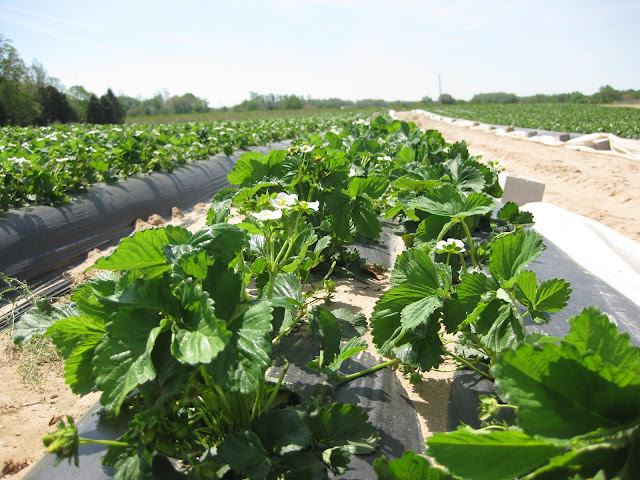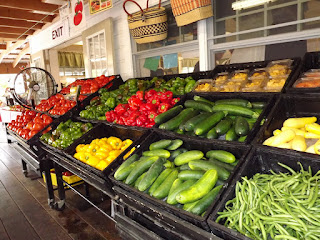We start by creating raised beds in our fields. The tractor pulls an implement that mounds the
soil up and lays down plastic and irrigation drip tape at the same time. The plastic helps to control weeds, provide proper
moisture and allow the soil to warm up faster in the spring.
This is what the beds look like when complete.
Next, we plant the young strawberry plants in late
August.
The plants are in small containers and are called “plugs”
The tractor moves very slow as the planters gently place the
plugs in to the holes in the raised beds.
Our strawberry patch is now fully planted and we can turn on
the irrigation when needed to supply water directly to the roots. This method of irrigation helps conserve
water usage and reduce disease pressure on the leaves. The plants enjoy the late summer and fall
sunshine and begin growing.
Once winter comes, we cover the strawberries with fibrous
blankets that keep them from freezing during December-March. In April, we uncover the strawberries and let
them continue growing and blooming.
Here are the plants in April uncovered and enjoying the
spring warmth. You can see blossoms
forming.
Strawberry blossoms are white with a yellow center. This yellow part of the blossom becomes the strawberry.
Here you can see the stages. White blossom, to green berry, to red berry.
When ripe, strawberries are picked in to green quarts and then placed in white flats for easy transport.
Strawberries are very delicious and nutritious.
Did you know?
-8 medium sized strawberries have more vitamin C than an orange
-Strawberries are high in fiber, antioxidants, vitamin C, potassium
and folate
-All 50 states produce strawberries.
-Strawberries are a member of the rose family along with apples
and plums.
-On
average there are 200 tiny seeds in each strawberry.
You
can pick your own strawberries straight from the patch at Fifer's in April and May!























































